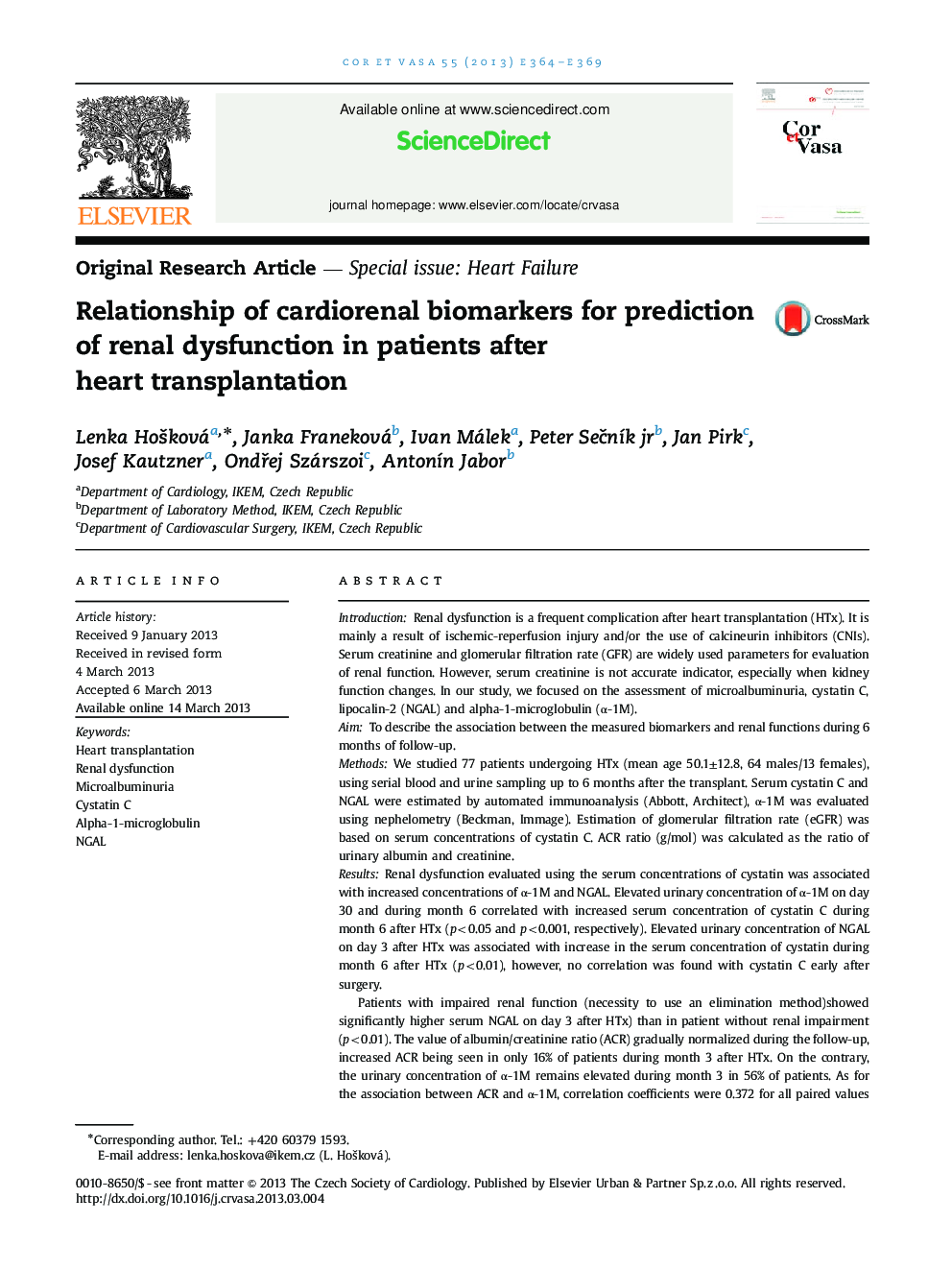| کد مقاله | کد نشریه | سال انتشار | مقاله انگلیسی | نسخه تمام متن |
|---|---|---|---|---|
| 2728451 | 1146980 | 2013 | 6 صفحه PDF | دانلود رایگان |

IntroductionRenal dysfunction is a frequent complication after heart transplantation (HTx). It is mainly a result of ischemic-reperfusion injury and/or the use of calcineurin inhibitors (CNIs). Serum creatinine and glomerular filtration rate (GFR) are widely used parameters for evaluation of renal function. However, serum creatinine is not accurate indicator, especially when kidney function changes. In our study, we focused on the assessment of microalbuminuria, cystatin C, lipocalin-2 (NGAL) and alpha-1-microglobulin (α-1M).AimTo describe the association between the measured biomarkers and renal functions during 6 months of follow-up.MethodsWe studied 77 patients undergoing HTx (mean age 50.1±12.8, 64 males/13 females), using serial blood and urine sampling up to 6 months after the transplant. Serum cystatin C and NGAL were estimated by automated immunoanalysis (Abbott, Architect), α-1M was evaluated using nephelometry (Beckman, Immage). Estimation of glomerular filtration rate (eGFR) was based on serum concentrations of cystatin C. ACR ratio (g/mol) was calculated as the ratio of urinary albumin and creatinine.ResultsRenal dysfunction evaluated using the serum concentrations of cystatin was associated with increased concentrations of α-1M and NGAL. Elevated urinary concentration of α-1M on day 30 and during month 6 correlated with increased serum concentration of cystatin C during month 6 after HTx (p<0.05 and p<0.001, respectively). Elevated urinary concentration of NGAL on day 3 after HTx was associated with increase in the serum concentration of cystatin during month 6 after HTx (p<0.01), however, no correlation was found with cystatin C early after surgery.Patients with impaired renal function (necessity to use an elimination method)showed significantly higher serum NGAL on day 3 after HTx) than in patient without renal impairment (p<0.01). The value of albumin/creatinine ratio (ACR) gradually normalized during the follow-up, increased ACR being seen in only 16% of patients during month 3 after HTx. On the contrary, the urinary concentration of α-1M remains elevated during month 3 in 56% of patients. As for the association between ACR and α-1M, correlation coefficients were 0.372 for all paired values (n=510, p<0.0001). Serum cystatin C concentration values above 1.5 mg/L on day 10 after HTx were associated with worse prognosis (increased risk of death, p<0.05).ConclusionThe study has shown that evaluation of α-1M and NGAL on day 3 after the transplantation can predict the renal function 6 months after HTx. Increased serum cystatin C concentration on day 10 after HTx is associated with worse prognosis.
Journal: Cor et Vasa - Volume 55, Issue 4, August 2013, Pages e364–e369